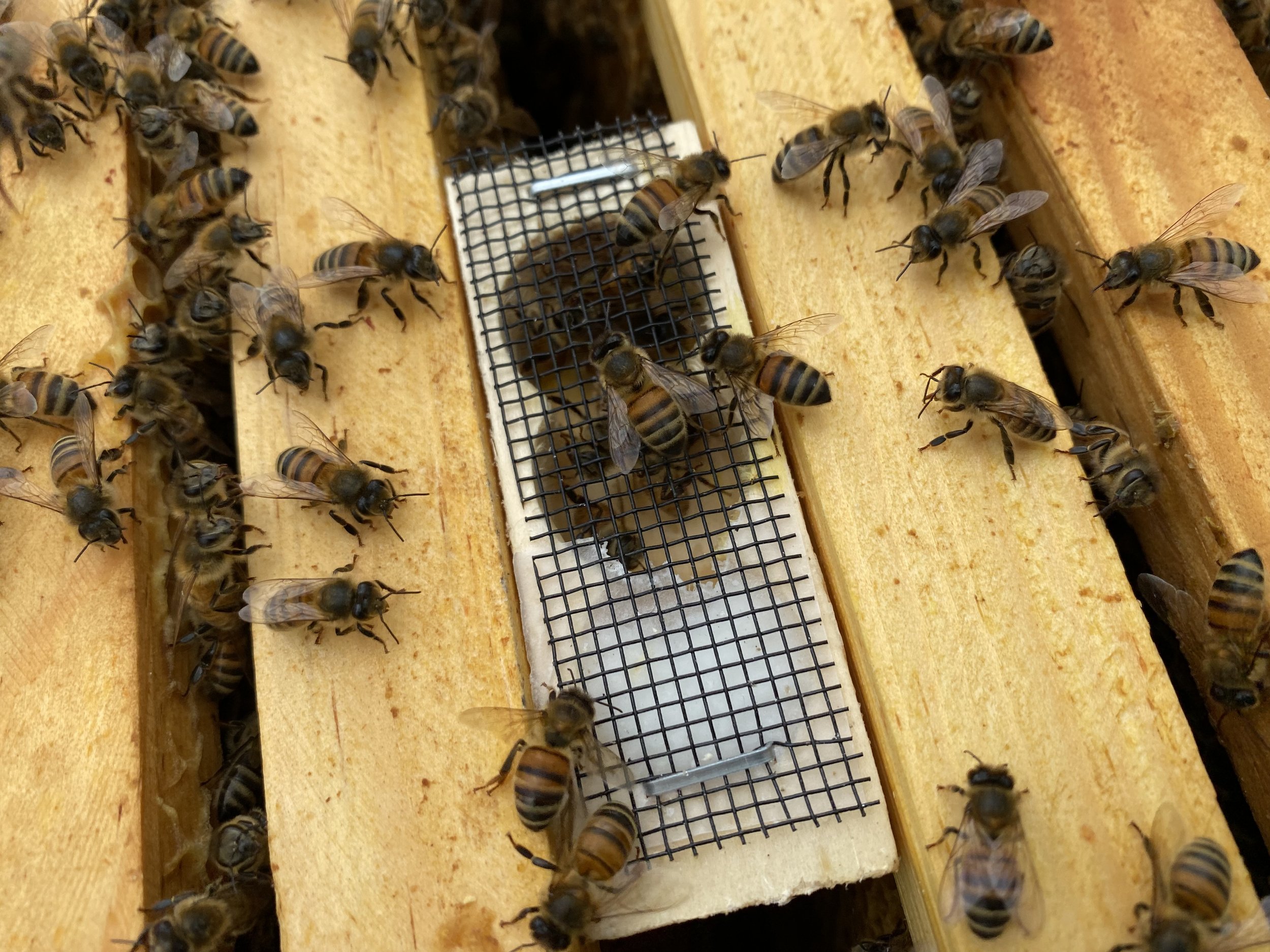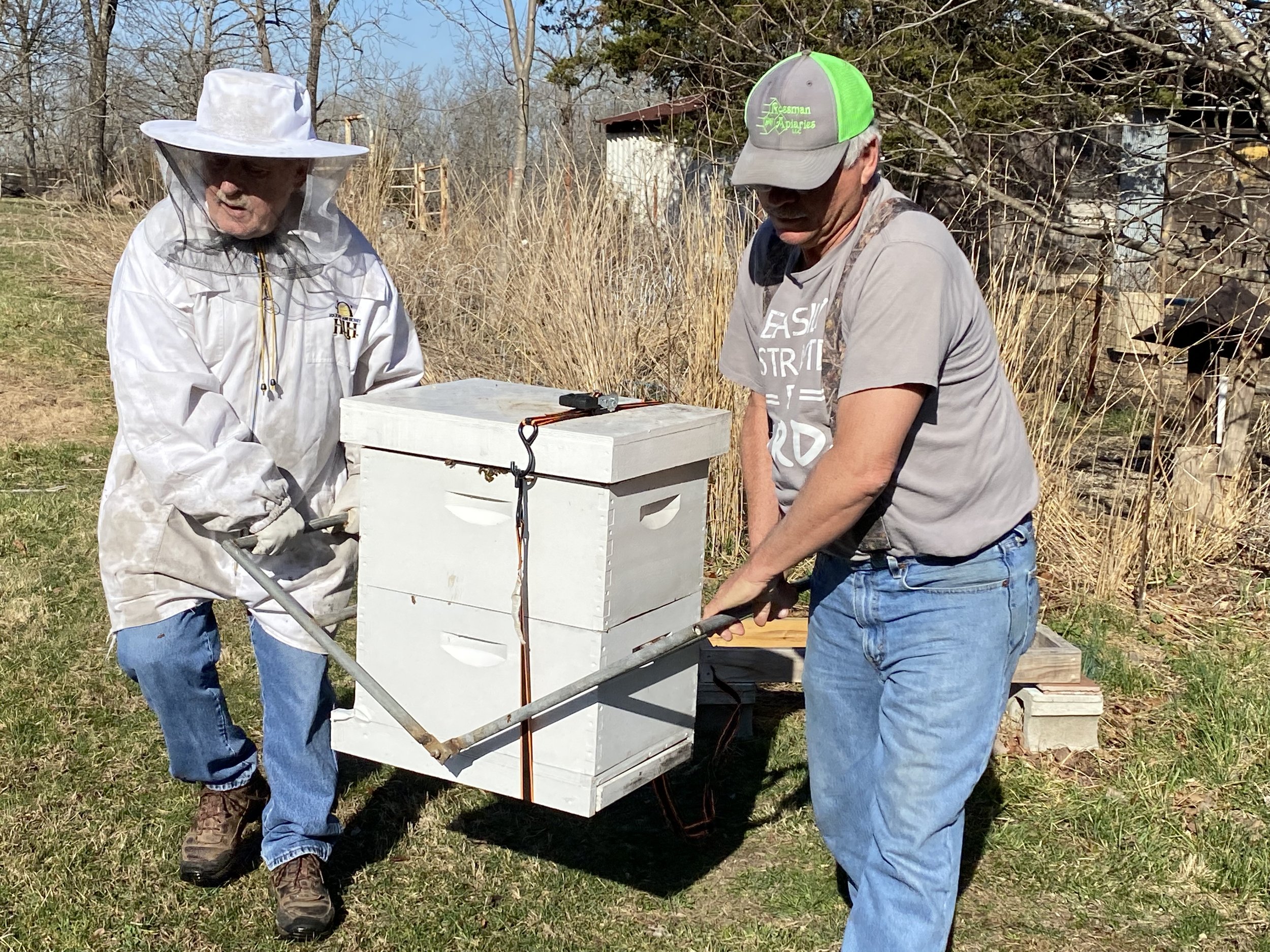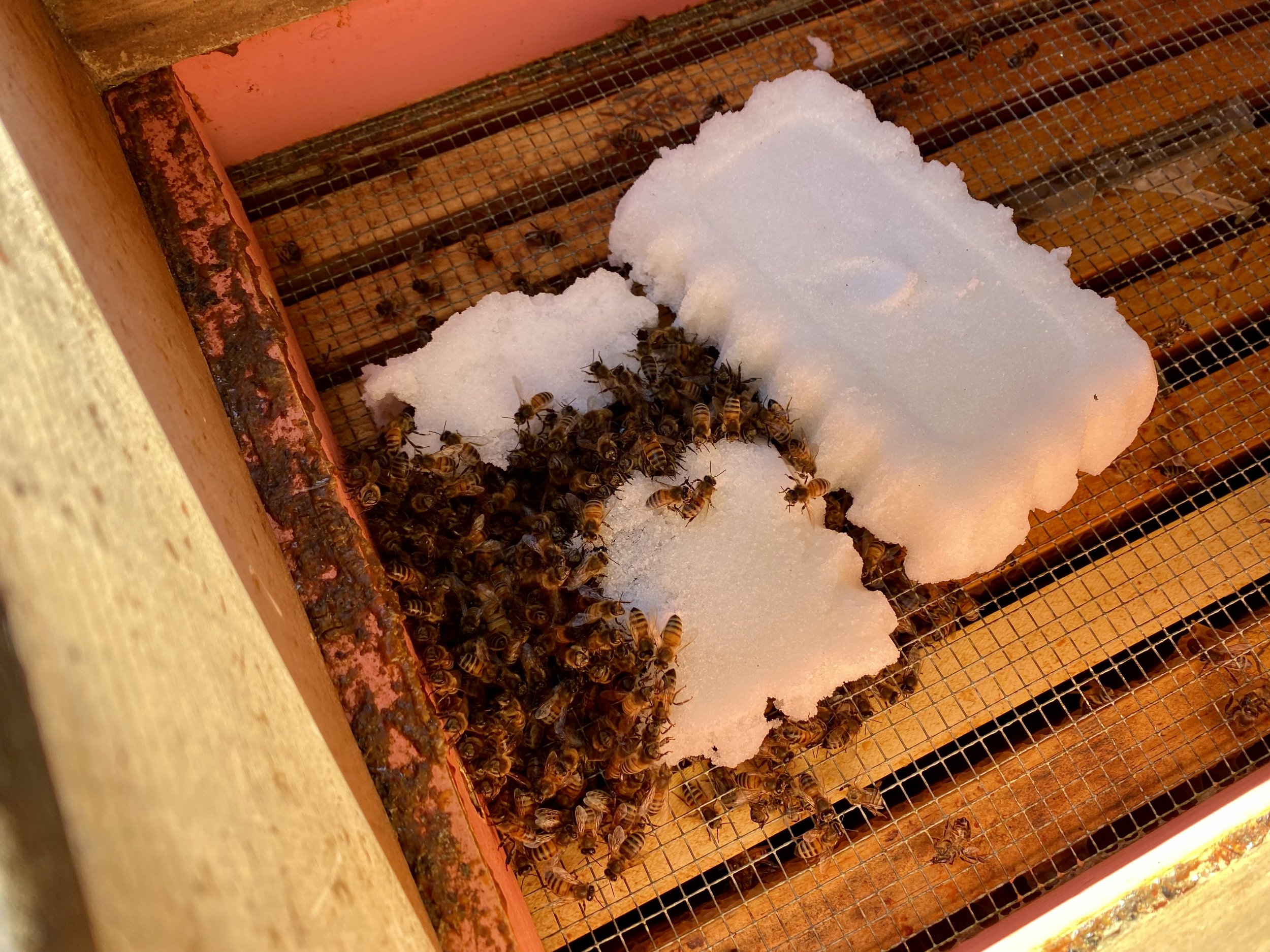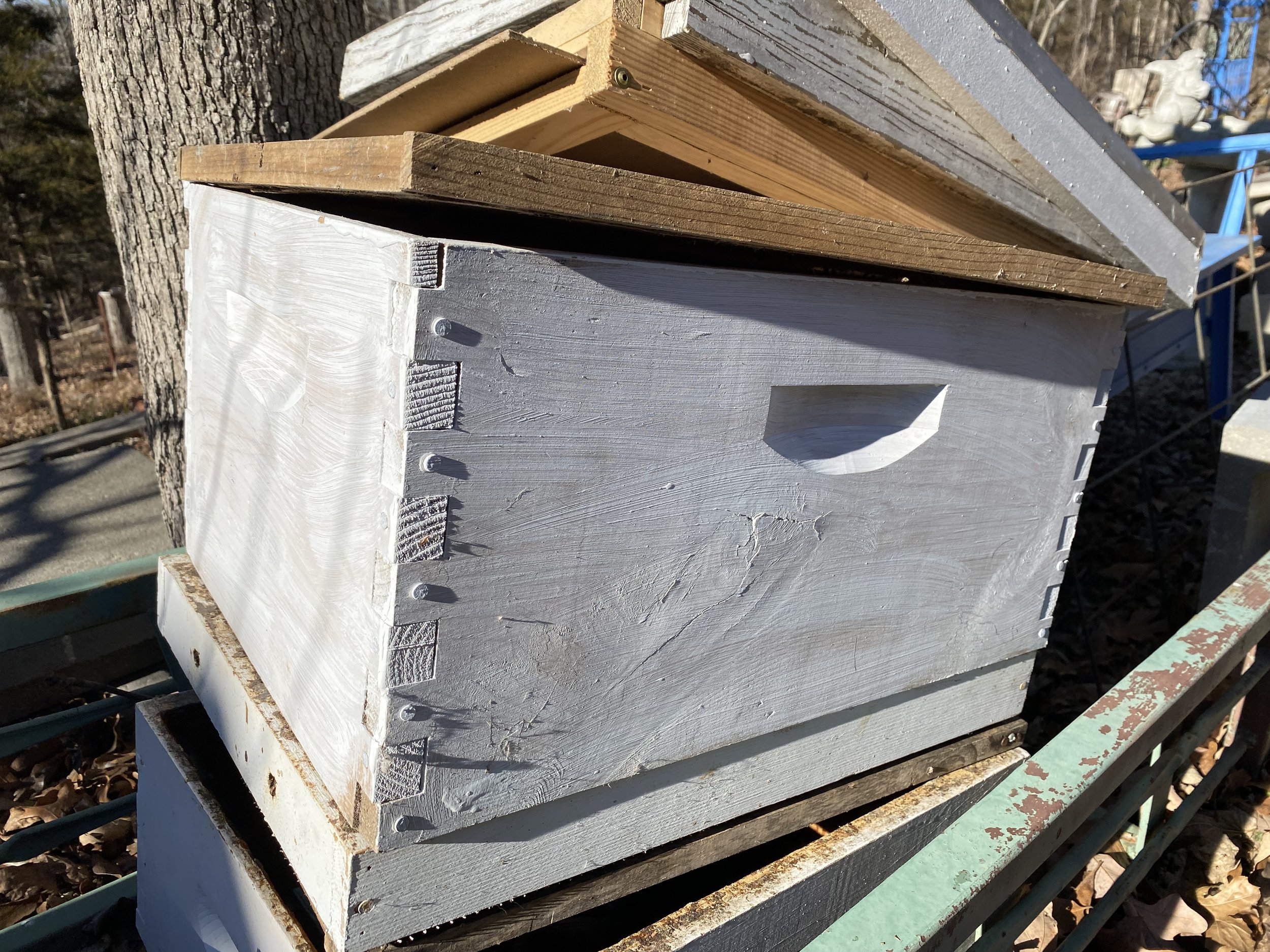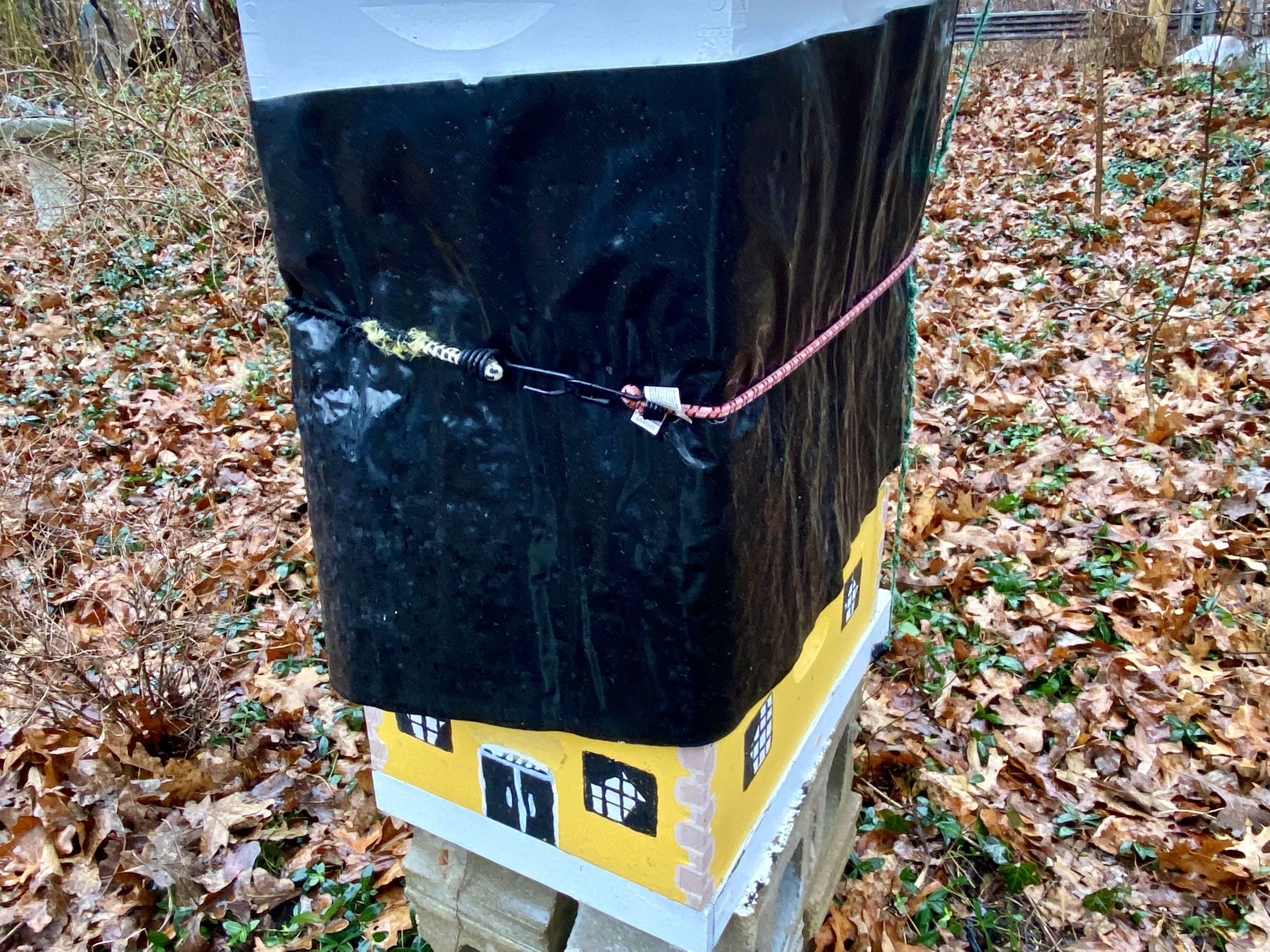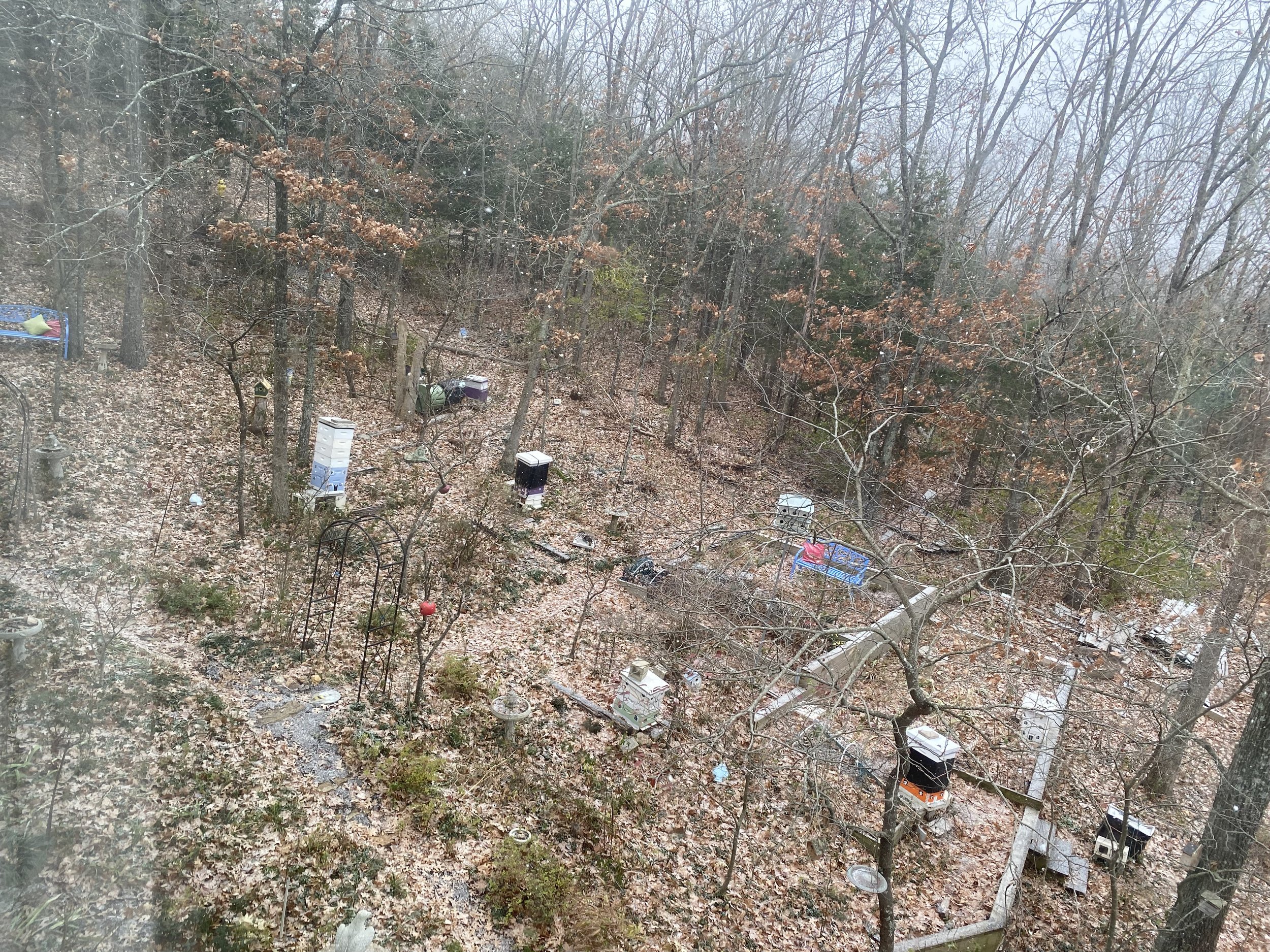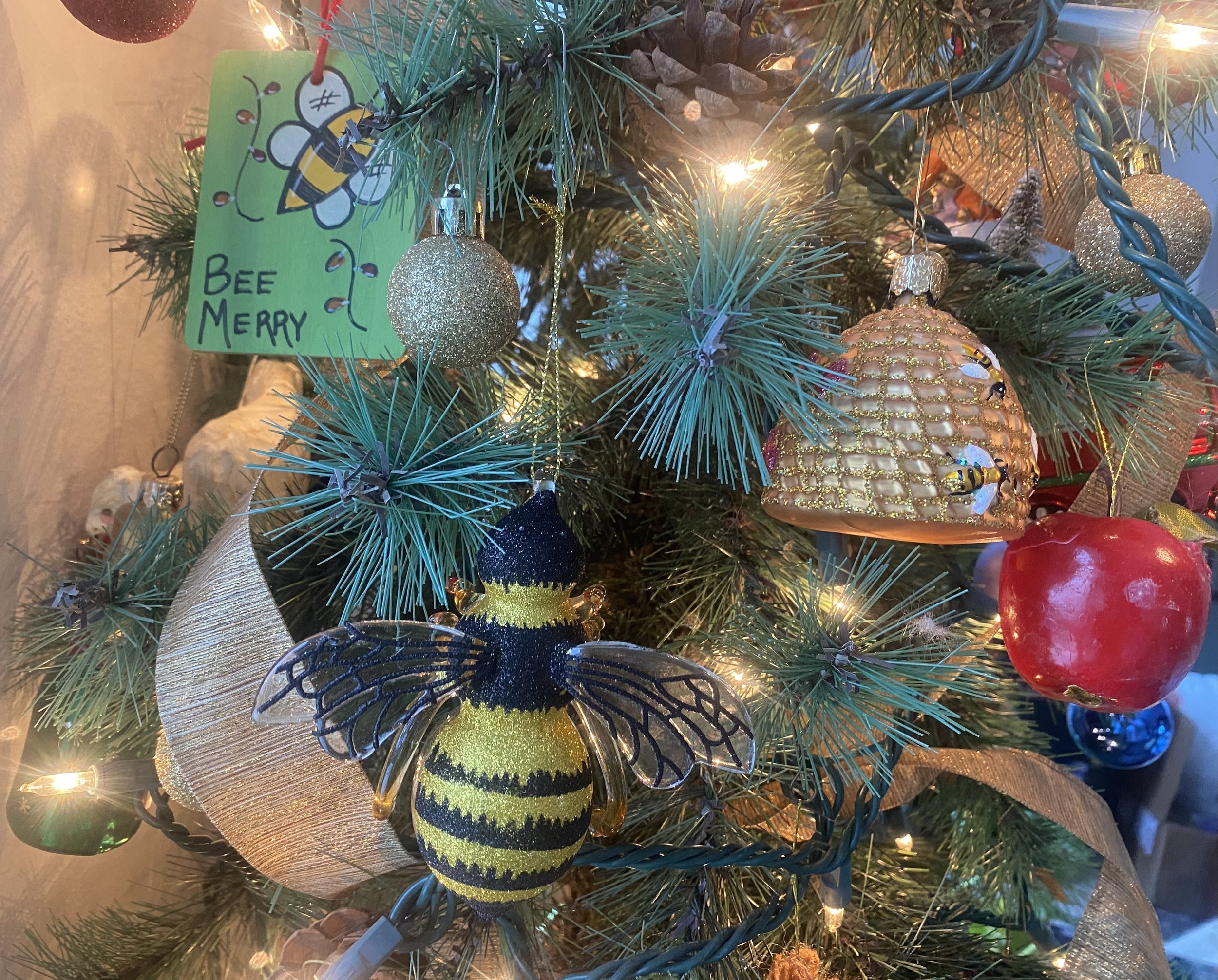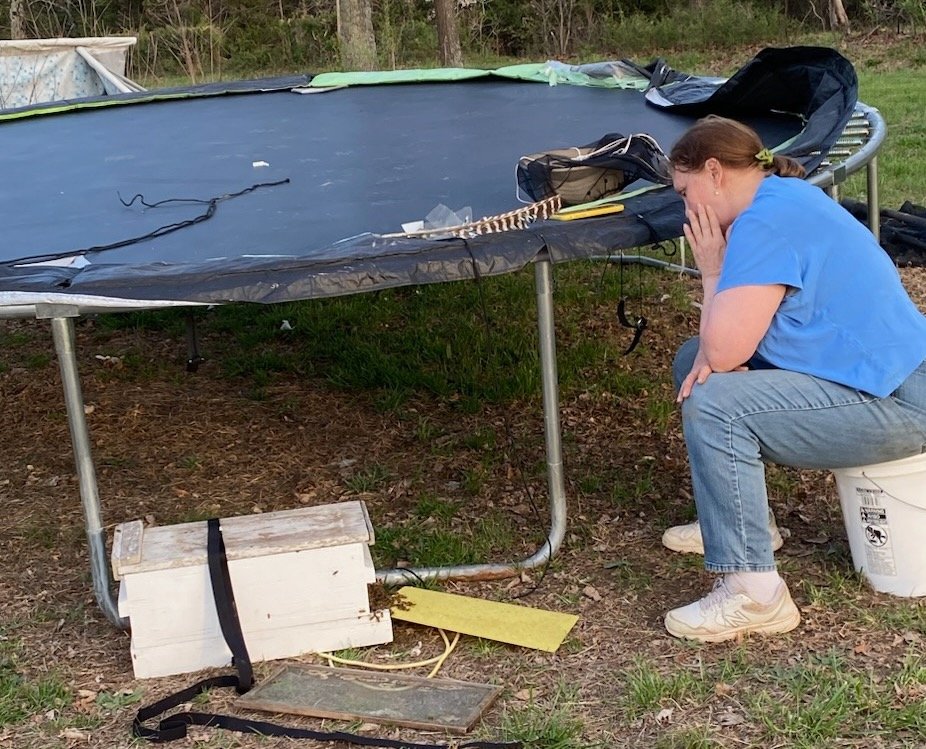Helping Bees During Heat Advisories
/bees depend on water to keep the colony cool so the closer the water source the better. (charlotte ekker wiggins photo)
Helping Bees During Heat Advisories
Do bees struggle with heat advisories? Yes, they do. Here’s a practical list of steps beekeepers can take to help their colonies stay cool during extreme heat advisories, especially when temps soar above 95°F (35°C):
1. Provide Shade
Move hives to partial shade if possible (under trees, canopies, shade cloths).
Use shade cloth (30–50%) stretched above hives to block direct sun while allowing airflow.
2. Ensure Ventilation
Prop open inner or outer covers with spacers (popsicle sticks, corks, twigs) to create ventilation gaps.
Install screened bottom boards to improve airflow from beneath.
Use a screened inner cover or remove the inner cover completely if safe to do so.
Add upper entrances (notches in boxes or drilled holes) to allow hot air to escape.
3. Reduce Crowding
Add a super (empty or with frames) to increase internal space and air volume.
Split overly large colonies to reduce population and heat production in one hive.
4. Improve Water Access
Place shallow water sources nearby (birdbaths, poultry waterers, buckets with floats or rocks).
Ensure bees don’t have to fly far for water—place within 10–20 feet if possible.
Check and refill water daily during heat waves.
5. Avoid Disruptive Inspections
Limit or postpone hive inspections during the hottest parts of the day to avoid stressing bees and releasing built-up heat.
6. Paint Hives Light Colors
Use white/light-colored exterior paint to reflect sunlight instead of absorbing it.
7. Use Insulated or Vented Hive Covers
Some commercial covers come with reflective insulation or passive vents to reduce heat gain.
8. Monitor for Heat Stress
Watch for signs of heat stress: bearding, fanning at entrances, melted comb, abandonment of brood or bees sitting on the hive bottom.
Bearding is normal during heat but extreme behavior or melted comb signals intervention is needed fast.
9. Consider Hive Orientation
If placing new hives, orient entrances away from the late afternoon sun in hot climates.
10. Emergency Cooling
In extreme conditions, some beekeepers use frozen water bottles on top of inner covers (with insulation to slow melting) or evaporative wicking materials—only if this can be done safely and consistently.




